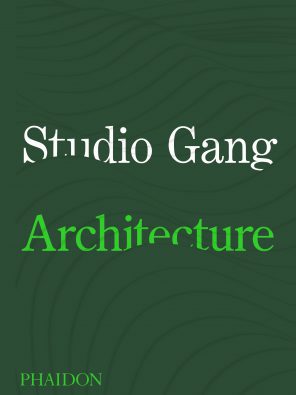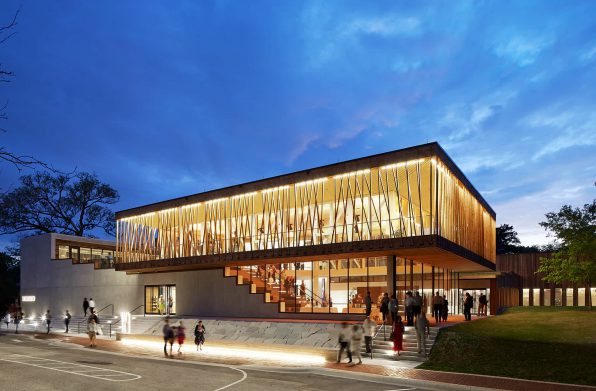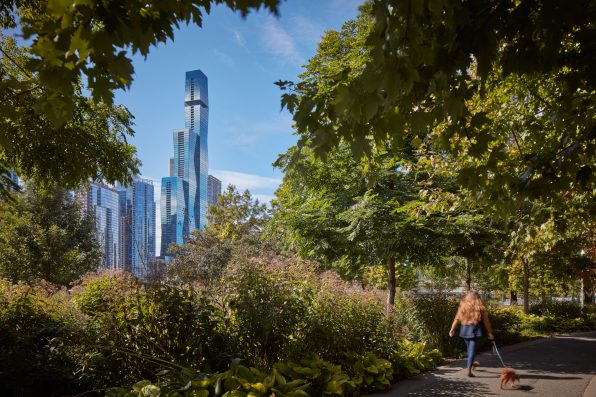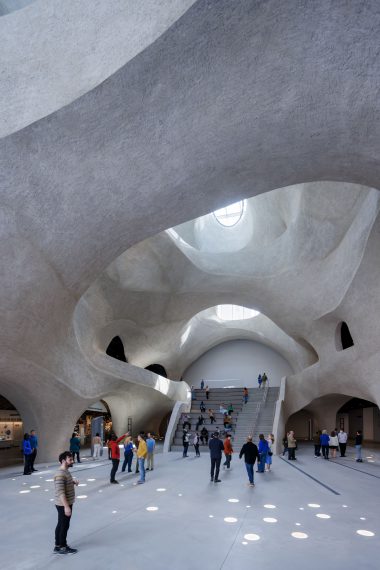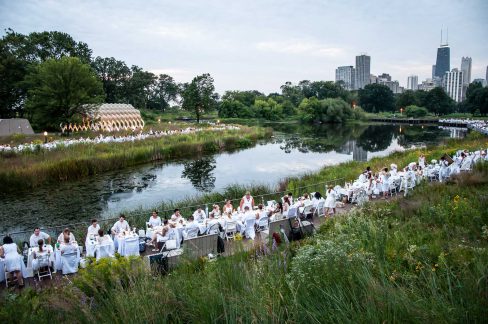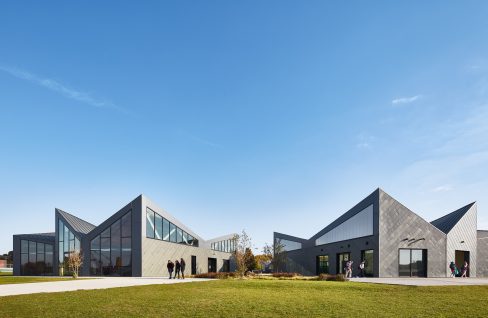Celebrated Living — "Moving Architecture"
“I grew up in a country town—Belvidere, Illinois—about 70 miles from Chicago. As a child I had a tree house, and there’s something wonderful about sitting above the street, surrounded by a canopy of trees and all the amazing designs within nature.
At Studio Gang, we have camping retreats every year. It’s a way to immerse ourselves in nature and think about how architecture can connect people with their environment. At our main office in Chicago’s Wicker Park, we have a rooftop garden and laboratory with more than 70 plant species. Every summer we have a bioblitz and invite people, from neighbors to scientists, to help us identify the plant, animal and microbial species on the roof. There’s also a kind of tree house with transparent walls, an event space used for gatherings and yoga classes: It’s a continuation, I suppose, of the tree house and elevated ecosystems I loved as a child.
My father was a civil engineer, and on family trips to Chicago, I was fascinated by all the buildings that are pure engineering feats, true to their materials and not simply decorative. Architecture is science and art, and Chicago’s bold design includes work by Frank Lloyd Wright, Mies van der Rohe and other great architects. This city has always been an inspiration: I went to the University of Illinois and then the Harvard Graduate School of Design in the early 1990s.
After graduating, I worked for OMA in Rotterdam and then came back to Chicago. I opened Studio Gang in 1997, and now we also have offices in San Francisco, New York and Paris. Our first big project in Chicago was Aqua, an 82-story mixed-use building with cantilevered, curvilinear floor slabs, creating an appearance of undulating movement.
In my new book, Studio Gang: Architecture, 25 projects are organized according to various ideas in our work, starting with ‘Rhythm.’ I’ve always been fascinated by Eadweard Muybridge’s 1887 Animal Locomotion stopmotion photographs, captured still images that suggest movement of bodies in space. Architecture doesn’t move, but if it has a certain rhythm it can have the appearance of movement. The rhythmic roof trusses of our Chicago River boathouses, which were commissioned by the Chicago Park District to help revitalize the riverfront, echo a rower’s strokes in the water.
‘Flow’ includes our Richard Gilder Center for Science, Education, and Innovation at the American Museum of Natural History in New York. For the Nature Boardwalk at Lincoln Park Zoo, featured in the ‘Toward Terrestrial’ section, we removed the concrete edges around the South Pond and planted vegetation; now, some 250 species can be seen in a biodiverse habitat.
The ‘Up in the Canopy’ portion of the book has Writers Theatre, set amid giant trees in Glencoe, Illinois, a Tudor-style village. The University of Chicago Center in Paris is situated on a platform built over rail lines, but the landscaping gives you the feeling of being in a canopy of trees.
‘Beyond Transparency’ entails our new Solar Carve commercial tower, overlooking New York’s High Line. Solar Carve uses low-reflectivity glass to guard against bird collisions and reduce glare for pedestrians. Most of the volume of the building is to the west, away from the High Line, and the facade is carved out like a diamond, which means more sunlight and views of the Hudson River for High Line strollers. Solar Carve also has a garden: the greenroof movement is incredibly important to the health of cities, and it would be wonderful if more buildings had green roofs, perhaps connected to each other. A building shouldn’t be a stand-alone object. It should be integrated within the environment it occupies.
In Studio Gang: Architecture, I use the phrase ‘actionable idealism’ to define the intention of our practice, work that helps humans coexist and support one another. Design sets the stage for our relationships and helps us all understand how people live. Despite the world’s problems, I believe in the possibilities of architecture outlined by John Dewey in Art as Experience: ‘buildings, among all art objects, come the nearest to expressing the stability
and endurance of existence.’
I’ve been fortunate to be honored at various times, from being a MacArthur Fellow to having an exhibition at the Art Institute of Chicago, but I don’t dwell on that. Every day I simply go to work with my team, trying to create architecture that does good things.”
